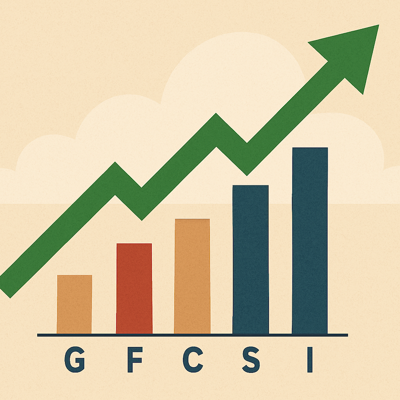If you’re a federal employee who started working for the government in 2015 or later and you’ve never adjusted your allocations in your Thrift Savings Plan account, then you’re entirely invested in one of the Lifecycle (L) funds. Which one depends on your projected retirement date; each L fund is a five year increment and is targeted to maximize your potential retirement savings by adjusting your allocations every quarter to get more and more conservative as your career progresses.
Unfortunately, the reality isn’t quite so simple, and there’s likely a better way to maximize your savings than sitting entirely in the L funds for your whole career.
What are the L funds?
The L funds were introduced in August, 2005, to offer federal employees a simpler way of investing for retirement than personally allocating all of their savings amongst the five base funds. The L funds actually do that for you, investing in a mix of those funds unique to each L fund, known as the “target allocation.” The further you are from retirement, the more aggressive the target allocation is, with more shares invested in the C, S and I funds, which are prone to more frequent fluctuations, but also higher returns over time.
The target allocation is adjusted every three months, gradually increasing shares of the more conservative G and F funds. Eventually, when the fund reaches its target date, it rolls into the L Income fund, which is the most conservative. As of April 2025, 73.25% of the L Income fund is invested in either the G or F funds. The L Income fund is for TSP participants who are either already withdrawing funds, or plan to begin that same year.
The L funds were originally offered in 10 year increments; in 2020, new funds were introduced to expand it to five year increments.
In 2015, the L funds replaced the G fund as the default allocation for new TSP participants.
Pros and cons of the L funds
The primary benefit of the L funds is their simplicity. If you want a set-and-forget retirement strategy for the entirety of your federal career, you can let the Thrift Savings Plan manage your allocations for you by remaining in the L funds. And you’ll certainly see more growth than if your entire portfolio is in the G fund.
However, federal employees that understand the actual structure and performance of the five core funds will realize that there are a few things about the L funds that are dragging down the overall performance of the portfolio.
The L 2030 fund — for people who were born 1965-1969 or intend to retire between 2028-2032 — has a 10 year average annual return of 7.23%. The L 2050 fund — for people who were born 1985-1989 or intend to retire between 2048-2052 — has a 10 year average annual return of 8.67%. The L 2050 is the furthest targeted date with 10 year average annual return data. The L Income fund – for people at or near retirement – has a 10 year average annual return as of February 2025 is 4.38%. That means, especially in recent years, it’s only barely beating inflation. The reason for this is that the majority of the funds are in the underperforming G and F funds.
Next, let’s understand the five funds that make up the L funds. The lifetime average annual return of the S fund has been 9.21%. This closely matches the performance of the Dow Jones U.S. Completion Total Stock Market Index, made up of small to medium stocks of U.S. companies not included in the S&P 500 Index. The C fund has an average lifetime return of 11.16%. This closely matches the performance of the S&P 500, made up of stocks of 500 medium to large U.S. companies. The I fund has an average lifetime return of 5.16%. This closely matches the MSCI EAFE Index from inception through July 31, 2024; MSCI ACWI IMI ex USA ex China ex Hong Kong Index thereafter. The F fund has only averaged 1.6% over the last 10 years. This closely matches the performance of the Bloomberg U.S. Aggregate Bond Index. While it is considered more conservative, it lost almost 13% in 2022, confirming that it is not truly a conservative option. Last is the G fund. In the last 10 years, it has averaged 2.59%. This is the only truly conservative option as it is short term government securities and is not tied to the markets.
How to actually maximize your TSP strategy
So with all of that information in mind, what’s the best strategy to get the most out of your TSP? How you truly maximize your TSP depends on your age and if you are still employed by the government. There are different sets of rules depending on these variables. If you are 59.5 or older, or are separated from service, you have more options. If you are younger than 59.5 and still employed, you only have the TSP options to choose from (unless you have an old 401k, IRA, 403b, etc.). Being 59.5 while employed or being separated from service is a huge advantage because now you can continue to use TSP for what it is best at (low-cost stock exposure), but the conservative positions can be rolled over to an IRA where there are much stronger growth options in the conservative space.
Understanding the actual performance of the core five funds is how you can make your own customized L fund that historically outperformed the L funds themselves. You can do this by looking at the appropriate risk vs. conservative ratio that the appropriate L fund would suggest for your time horizon and making the allocations yourself.
Since the three stock funds tend to move in the same direction at the same time, almost all the time, it is important to ask yourself “If I am going to take relatively the same amount of risk with my aggressive allocations (C,S and I) would I rather have a 10 year average of 11%, 9% or 5%?” Since the F fund is not actually conservative and has such a low 10 year average, you may not want to include that in the mix. That leaves the G fund for the conservative positions.
As an example, if you are at or near retirement, the L income fund would be the “most appropriate.” That currently has about 74% conservative (G and F), and 26% aggressive (C,S and I). If you are 59.5 or older or separated from service, then to maximize this would be to keep 26% of your funds inside TSP and focus on the best historical stock option, which is the C fund. The conservative positions can be rolled over to an IRA. If you are not 59.5 or separated from service, you could simply go 74% G and 26% C. There are less fees by not being in the L fund and, historically, you would have a higher rate of return with less risk.
Join us for our free TSP webinar or April 24th to demystify these options and we can teach you about some time tested maximization strategies regardless of what state of your career you are in!
Demystifying Your TSP and Government Downsizing Updates
Thurs., April 24 at 1 p.m. ET
Free 60-minute webinar with 30-minute Q&A following
Register here
- Retirement Benefit Eligibility Requirements
- Understanding the TSP basics.
- C, S, I, F, & G funds explained.
- Learning about contribution limits and strategies. Roth vs. Traditional. When/how to withdraw. Plus more!
- How to maximize TSP utilizing the Age-Based In-Service withdrawal.
- Forms needed for retirement: The forms you need for retirement vary depending on your specific situation and the retirement system you’re a part of within the federal government.
- 30-min interactive Q&A session
Copyright
© 2025 Federal News Network. All rights reserved. This website is not intended for users located within the European Economic Area.







